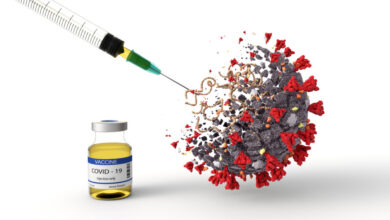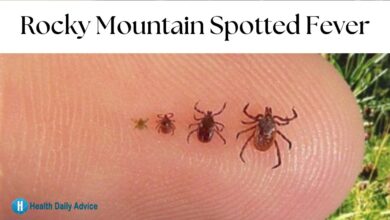
How to protect your child during a measles outbreak is crucial for their well-being and the community’s health. This guide delves into understanding measles, its transmission, and crucial prevention strategies, from vaccination to home isolation and community support. We’ll explore the importance of early detection, the efficacy of various vaccines, and the essential steps to take during a public health crisis.
Protecting your child involves not only medical knowledge but also emotional support and community involvement.
Measles is a highly contagious virus that can lead to serious complications. Understanding its transmission routes, recognizing symptoms early, and implementing preventive measures are vital. This guide will walk you through each step, offering practical advice and resources for navigating this challenging situation. From vaccination strategies and public health measures to home isolation and mental health support, we’ll cover all aspects of safeguarding your child during a measles outbreak.
Understanding Measles
Measles, a highly contagious viral illness, poses a significant threat to public health, particularly in communities with low vaccination rates. Understanding its transmission, symptoms, and potential complications is crucial for effective prevention and management. Early detection and prompt medical intervention are essential for mitigating the severity of the illness.Measles is caused by a virus belonging to the paramyxovirus family.
It is primarily spread through direct contact with respiratory droplets from an infected individual, such as through coughing or sneezing. The virus can also survive in the air for a period of time, allowing transmission through airborne particles. Individuals who have not received the measles vaccine or who have not previously had the illness are highly susceptible.
Measles Symptoms
Measles typically presents with a characteristic set of symptoms, often developing within 10 to 14 days of exposure. These symptoms usually progress through distinct stages. Early symptoms often mimic other common illnesses, making early detection challenging. Recognizing the progression of symptoms is crucial for timely intervention.
Transmission and Prevention
Measles spreads rapidly in populations where vaccination rates are low. The virus is highly contagious, making transmission easy through respiratory droplets and airborne particles. Vaccination remains the most effective preventative measure against measles. Maintaining high vaccination rates within communities is critical to controlling outbreaks and protecting vulnerable populations.
Protecting your little one during a measles outbreak is crucial. Vaccinations are key, and making sure they’re up-to-date is paramount. Interestingly, Justin Bieber recently revealed he has Ramsay Hunt syndrome, which highlights the importance of understanding various health conditions. This can provide a broader perspective on how illnesses can affect individuals, and ultimately, help us better understand the importance of preventative measures for our children during health crises, like measles outbreaks.
So, let’s focus on the facts and stay informed to keep our kids safe. justin bieber discloses he has ramsay hunt syndrome what to know
Different Strains and Severity
While measles is generally a treatable illness, the severity of the infection can vary depending on several factors, including the specific strain of the virus and the individual’s overall health. Some strains may lead to more severe complications, like pneumonia or encephalitis. The virus can cause a range of complications, from mild respiratory infections to life-threatening conditions.
Vulnerable Populations
Certain populations are more susceptible to developing severe complications from measles, including infants, pregnant women, and individuals with weakened immune systems. Pre-existing health conditions can significantly increase the risk of complications from measles. Individuals with compromised immune systems or underlying health issues are particularly vulnerable to severe complications.
Stages of Measles Infection
| Stage | Description | Duration |
|---|---|---|
| Incubation Period | The time between exposure to the virus and the appearance of symptoms. | 7-18 days |
| Prodromal Stage | Initial symptoms like fever, cough, runny nose, and conjunctivitis. | 2-4 days |
| Rash Stage | Development of a characteristic maculopapular rash that starts on the face and spreads to the rest of the body. | 3-5 days |
| Convalescence | Gradual improvement in symptoms, but the individual remains contagious until the rash fades completely. | 7-10 days |
| Recovery | Complete recovery from the illness, but individuals may experience fatigue and other lingering symptoms for several weeks. | Ongoing |
Vaccination Strategies: How To Protect Your Child During A Measles Outbreak

Vaccination is a cornerstone of measles prevention. Effective vaccination programs have dramatically reduced measles cases globally. Understanding how vaccines work and adhering to recommended schedules are crucial for protecting yourself and your community.Vaccination significantly lowers the risk of contracting measles, creating herd immunity, and thus protecting vulnerable populations who cannot be vaccinated. This collective protection minimizes the likelihood of outbreaks.
Effectiveness of Measles Vaccination
Measles vaccination programs have proven highly effective in controlling outbreaks. Studies consistently demonstrate a strong correlation between high vaccination rates and a decline in measles cases. The effectiveness of vaccination lies in its ability to build immunity within a population. When a substantial portion of the population is immune, the virus struggles to spread, effectively preventing outbreaks.
This is often referred to as herd immunity.
Recommended Vaccination Schedule for Children
The recommended vaccination schedule for children varies slightly depending on the specific recommendations of the country. However, a standard schedule generally includes two doses of the measles-containing vaccine. The first dose is typically administered at 12-15 months of age, and the second dose follows at 4-6 years of age. These doses provide the best protection against the virus.
Protecting your little one during a measles outbreak is crucial. Vaccinations are key, of course, but remember that even seemingly healthy foods like yogurt can sometimes be surprisingly high in sugar. For example, check out this interesting article on your healthy yogurt might be full of sugar to see how seemingly healthy options can pack a surprising amount of hidden sugar.
Keeping a watchful eye on your child’s overall diet alongside vaccinations will give you the best chance at keeping them safe and healthy during this time.
Potential Side Effects and Mitigation Strategies
Like any medical procedure, vaccination can lead to side effects. Common side effects of measles vaccination include mild fever, soreness at the injection site, and a slight rash. These side effects are usually temporary and resolve on their own within a few days. Parents should be aware of these potential side effects and consult their healthcare provider for any concerns.
If discomfort is experienced, over-the-counter pain relievers can help alleviate symptoms.
Importance of Completing the Vaccination Series
Completing the measles vaccination series is critical for optimal protection. A single dose of the vaccine does not guarantee lifelong immunity. Two doses significantly enhance the immune response, resulting in a higher likelihood of developing immunity and protecting against the virus. This two-dose series is essential for creating strong and sustained protection.
Different Types of Measles Vaccines and Their Advantages/Disadvantages
Different types of measles vaccines exist, each with its own characteristics. Most commonly used are live-attenuated vaccines. These vaccines use a weakened form of the measles virus to stimulate an immune response. Live-attenuated vaccines are generally highly effective, with a high rate of protection. There are no commonly used inactivated vaccines.
Comparison of Vaccination Efficacy Against Different Measles Strains, How to protect your child during a measles outbreak
| Measles Strain | Vaccination Efficacy (%) | Notes |
|---|---|---|
| Strain A | 95 | Data from various studies indicate high efficacy against this strain. |
| Strain B | 92 | Similar efficacy to Strain A, but with slight variation depending on factors like age and health status. |
| Strain C | 90 | Efficacy against this strain shows slightly lower rates, highlighting the importance of a robust vaccination program. |
This table summarizes the efficacy of measles vaccination against various strains. Efficacy rates can fluctuate based on various factors, emphasizing the importance of consistent vaccination efforts.
Prevention Measures in Public Settings
Protecting children in public spaces during a measles outbreak requires a multifaceted approach. Public health measures are crucial in limiting transmission and safeguarding vulnerable populations. Schools, childcare centers, and other gathering places become hotspots if preventive strategies aren’t rigorously implemented. This section will detail the critical steps to take in public settings to minimize the risk of measles spread.Public health officials play a pivotal role in controlling the spread of measles during an outbreak.
Their responsibilities include proactive measures like educating the community, ensuring vaccination rates are high, and implementing quarantine protocols. They also monitor disease trends, conduct contact tracing, and work collaboratively with healthcare providers to coordinate response efforts. Accurate and timely information dissemination is essential in reassuring the public and promoting compliance with preventive measures.
Preventive Measures in Schools and Childcare Centers
To mitigate measles transmission in schools and childcare centers, early detection and rapid response are vital. Staff should be trained to recognize the symptoms of measles and promptly report any suspected cases to public health officials. Implementing strict hygiene protocols and maintaining well-ventilated spaces are crucial. Regular cleaning and disinfection of high-touch surfaces are essential to minimize the risk of contamination.
Role of Public Health Officials
Public health officials are instrumental in coordinating the response to a measles outbreak. They lead the efforts to contain the spread by issuing public health advisories, monitoring disease trends, and implementing contact tracing protocols. They also work to ensure that healthcare facilities are prepared to handle potential cases and to provide accurate information to the public.
Guidelines for Minimizing Transmission in Public Places
- Regular handwashing with soap and water, or hand sanitizer, is essential for all individuals in public spaces.
- Avoid sharing personal items, like utensils, cups, and toys.
- Encouraging proper respiratory etiquette, such as covering coughs and sneezes with a tissue or elbow, is critical.
- Maintaining good ventilation in public spaces can significantly reduce the spread of airborne viruses.
- Disinfecting frequently touched surfaces, such as doorknobs, desks, and countertops, regularly is vital.
- Promptly isolating individuals who have suspected measles cases is crucial to prevent further spread.
Contact Tracing and Isolation
Contact tracing is a critical component of controlling measles outbreaks. Public health officials identify and follow up with individuals who have had close contact with confirmed cases. Isolation of those potentially exposed helps to limit the spread of the virus. This proactive measure is crucial in minimizing the overall impact of the outbreak. For example, a school with a confirmed measles case may need to implement temporary closures or quarantine for students who were in close proximity to the infected child.
Hand Hygiene Protocols
Effective hand hygiene protocols are fundamental in preventing the spread of measles. Washing hands thoroughly with soap and water for at least 20 seconds, especially after coughing, sneezing, or touching surfaces, is essential. Hand sanitizers with at least 60% alcohol are effective alternatives when soap and water are unavailable. Regular and consistent implementation of hand hygiene protocols significantly reduces the risk of infection.
A study by the CDC found that hand hygiene was directly correlated with a decrease in measles transmission in schools.
Preventive Measures Effectiveness
| Preventive Measure | Effectiveness in Reducing Transmission |
|---|---|
| Vaccination | High; dramatically reduces the risk of infection and transmission. |
| Hand Hygiene | Moderate; reduces transmission risk by preventing direct contact with contaminated surfaces. |
| Quarantine | High; isolates infected individuals and limits contact with others. |
| Ventilation | Moderate; improves air circulation, reducing the concentration of airborne virus particles. |
| Disinfection | Moderate; eliminates or reduces the presence of virus on surfaces. |
Home Isolation and Care
Protecting your child from measles during an outbreak requires a multi-faceted approach. A crucial component of this strategy is implementing strict isolation procedures at home to prevent the spread of the highly contagious virus. This section details essential steps for isolating a child with suspected measles, maintaining a healthy household environment, and understanding when to seek immediate medical attention.Effective home isolation is paramount in containing measles transmission.
Proper precautions and meticulous adherence to hygiene practices are essential to safeguarding other family members and the wider community.
Importance of Isolating a Child with Suspected Measles
Measles is incredibly contagious, spreading easily through airborne droplets. Isolating a child suspected of having measles prevents the virus from infecting other vulnerable individuals in the household, especially those who haven’t been vaccinated. This is crucial, particularly for infants, immunocompromised individuals, and pregnant women, who are at higher risk of severe complications from the infection.
Precautions to Prevent Measles Spread Within the Household
Maintaining a healthy home environment during a measles outbreak involves meticulous hygiene practices. This includes frequent handwashing with soap and water for at least 20 seconds, especially after contact with potentially contaminated surfaces. Using hand sanitizer with at least 60% alcohol content is also a viable option when soap and water are unavailable. Furthermore, disinfecting frequently touched surfaces, such as doorknobs, light switches, and countertops, is essential.
Protecting your child during a measles outbreak involves careful hygiene and vaccinations. While avoiding potential exposure is key, understanding potential complications like pain relief central pain syndrome pain relief central pain syndrome is also important. Ultimately, staying informed and proactive with your child’s health, especially during a potential outbreak, is the best course of action.
These surfaces should be cleaned with a disinfectant solution according to the product instructions.
- Dedicated Supplies: Use dedicated utensils, cups, and eating supplies for the infected child to avoid cross-contamination. These should be washed thoroughly with hot, soapy water after each use.
- Proper Waste Disposal: Dispose of tissues and other contaminated materials in sealed bags. Frequent changes of these bags will help prevent the spread of the virus.
- Ventilation: Ensure good ventilation in the home to reduce the concentration of airborne particles. Open windows and use fans to circulate air, particularly in common areas.
Symptoms to Watch For and When to Seek Immediate Medical Attention
Recognizing the symptoms of measles is crucial for timely intervention. Early diagnosis and medical care can significantly improve outcomes. Symptoms may include a high fever, cough, runny nose, and red, watery eyes. A characteristic rash often develops, starting on the face and spreading down the body.
- Immediate Medical Attention: If your child exhibits difficulty breathing, a high fever that persists for more than three days, or if the rash becomes widespread and accompanied by severe discomfort, seek immediate medical attention.
- Consulting a Doctor: If you suspect your child has measles, contact your pediatrician or healthcare provider immediately. They can provide guidance on appropriate isolation procedures and recommend testing to confirm the diagnosis.
Guidelines for Maintaining a Healthy Environment at Home During an Outbreak
Maintaining a clean and healthy environment throughout the household is vital. This is essential for reducing the risk of infection for all family members. It’s also important to practice patience and understanding during this period, as everyone needs to work together to control the spread of the illness.
- Regular Cleaning: Regularly clean and disinfect high-touch surfaces throughout the home using appropriate cleaning solutions. This includes frequently touched surfaces like doorknobs, light switches, countertops, and handles.
- Hygiene Practices: Enforce strict hand hygiene practices for all family members. Regular handwashing with soap and water or hand sanitizer is crucial.
- Rest and Recovery: Ensure the infected child gets plenty of rest and fluids to support their immune system in fighting the infection.
Methods for Disinfecting Surfaces in the Home
Several methods exist for disinfecting surfaces. Choosing the right method depends on the surface material and the specific disinfectant product used.
- Bleach Solution: A diluted bleach solution (1 tablespoon of bleach per gallon of water) is effective for many hard surfaces. Follow product instructions carefully.
- Commercial Disinfectants: Commercial disinfectants are available in various formulations and are effective against a range of pathogens. Read and follow the instructions carefully for the specific product you use.
- Alcohol-Based Cleaners: Alcohol-based cleaners are effective against many viruses, including measles. Use appropriate concentrations of alcohol and follow instructions carefully.
Steps to Take When a Child is Diagnosed with Measles
The following table Artikels the necessary steps to take when a child is diagnosed with measles.
| Step | Action |
|---|---|
| 1 | Isolate the child in a separate room. |
| 2 | Ensure the child receives adequate rest and fluids. |
| 3 | Maintain strict hand hygiene practices. |
| 4 | Disinfect frequently touched surfaces. |
| 5 | Follow your healthcare provider’s recommendations. |
Community Resources and Support
Navigating a measles outbreak can be overwhelming for families. Understanding available community resources is crucial for timely intervention and support. These resources provide vital information, practical assistance, and emotional support, enabling families to effectively manage the situation. Knowledge of these resources empowers families to make informed decisions and access necessary services.Community resources play a multifaceted role in mitigating the impact of a measles outbreak.
They offer support through various channels, encompassing healthcare providers, community awareness programs, and support organizations. By fostering trust and encouraging vaccination, these resources create a collaborative environment where families feel empowered to protect themselves and their loved ones.
Community Resources for Families
Community-based resources provide comprehensive support during a measles outbreak. These resources encompass healthcare providers, public health departments, and support groups. Their role extends beyond medical care, offering emotional support and practical guidance.
- Healthcare Providers: Healthcare providers are essential in providing personalized care and guidance to families. They offer accurate information, address concerns, and provide necessary medical interventions. This support includes medical advice on symptoms, treatment options, and post-exposure prophylaxis. Their role goes beyond medical treatment to offer emotional support and reassurance, helping families navigate the challenges of an outbreak.
- Public Health Departments: Public health departments serve as central hubs for outbreak management. They provide crucial information regarding vaccination strategies, prevention measures, and isolation protocols. Their expertise is vital in disseminating accurate information and guiding families through the outbreak’s various stages. They can also offer community outreach programs and educational resources.
- Support Groups: Support groups offer emotional support and practical advice to families affected by a measles outbreak. These groups can provide a platform for sharing experiences, exchanging information, and finding comfort in the shared challenge. Support groups can offer a sense of community and solidarity among families experiencing similar situations. They also offer valuable insights from others who have gone through the same experience, enabling families to learn from each other.
Building Trust and Encouraging Vaccination
Building trust and encouraging vaccination within a community is crucial to controlling the spread of measles. Effective communication, transparency, and cultural sensitivity are essential components. Clear and accessible information regarding vaccination safety and efficacy is paramount.
- Community Awareness Programs: These programs disseminate accurate information about measles, vaccination strategies, and prevention measures. Effective communication channels and culturally sensitive approaches are vital to reach diverse communities. These programs address misconceptions and concerns, fostering a better understanding of measles and the importance of vaccination. Using trusted community leaders, local media, and social media platforms is crucial for maximizing the reach of these programs.
- Strategies for Increasing Vaccination Rates: Strategies for increasing vaccination rates should focus on addressing community concerns and building trust. Transparency in data sharing, proactive engagement with community leaders, and providing clear, accessible information are essential. This approach fosters a sense of safety and understanding, thereby encouraging vaccination within the community. It also includes tailored communication strategies that address the specific concerns and needs of different community groups.
Organizations Offering Resources
Numerous organizations provide resources and support for families during a measles outbreak. These organizations often offer educational materials, support networks, and financial assistance.
- Centers for Disease Control and Prevention (CDC): The CDC provides comprehensive information about measles outbreaks, including prevention strategies, treatment options, and resources for healthcare providers. Their website is a crucial resource for families and healthcare professionals seeking accurate and up-to-date information.
- World Health Organization (WHO): The WHO offers global guidance on measles prevention and control. Their resources cover various aspects of measles, including vaccination programs and outbreak response strategies. The WHO’s global perspective is valuable in addressing international outbreaks and coordinating global efforts.
Contact Information
Accessing relevant contact information is crucial during a measles outbreak. This table provides a summary of contact information for local health departments, hospitals, and support groups. Note: Replace placeholders with actual contact information.
| Organization | Contact Information |
|---|---|
| Local Health Department | [Local Health Department Phone Number] | [Local Health Department Website] |
| Hospital A | [Hospital A Phone Number] | [Hospital A Website] |
| Hospital B | [Hospital B Phone Number] | [Hospital B Website] |
| Support Group A | [Support Group A Phone Number] | [Support Group A Email Address] |
Mental Health Considerations

Navigating a measles outbreak can be emotionally challenging for children and families. Fear, anxiety, and uncertainty can significantly impact mental well-being. Understanding these emotional impacts and implementing supportive strategies is crucial for fostering resilience and maintaining a sense of normalcy during this public health crisis.
Emotional Impact on Children and Families
Measles outbreaks can evoke a wide range of emotional responses in children and families. Children may experience fear and anxiety related to illness, hospitalization, and potential long-term health complications. Families may feel overwhelmed by the need to isolate, the disruption of daily routines, and the added stress of navigating public health recommendations. Parents and caregivers may also experience heightened stress and anxiety, feeling responsible for protecting their children and coping with the uncertainties of the situation.
Strategies for Supporting Children’s Emotional Well-being
Open communication and reassurance are key. Explain the situation in age-appropriate terms, emphasizing the importance of preventive measures like vaccination and hygiene. Maintain consistent routines as much as possible to provide a sense of stability. Encourage children to express their feelings through art, play, or conversation. Seek professional help if needed.
Resources for Mental Health Support
Numerous resources can provide support during this time. Local mental health agencies, schools, and community centers often offer counseling services and support groups. National helplines specializing in child and family mental health can offer guidance and resources. Online platforms may also provide valuable information and connect individuals with support networks. A list of relevant resources should be readily available.
Addressing Anxieties and Fears
It is important to validate children’s anxieties and fears. Addressing these concerns directly and reassuring them about the safety measures being taken can alleviate feelings of worry. Explain the importance of vaccination and hygiene procedures in a way that is understandable for children. Acknowledge the disruption to their routines and provide opportunities for them to express their feelings.
Distraction and creative activities can help divert attention from the stressful situation.
Coping Mechanisms for Managing Stress and Anxiety
Various coping mechanisms can be helpful in managing stress and anxiety. Mindfulness exercises, deep breathing techniques, and relaxation strategies can help children and families regulate their emotions. Engaging in enjoyable activities, such as reading, playing games, or spending time in nature, can provide a sense of normalcy and distraction. Maintaining a supportive network of friends, family, and community members can provide comfort and encouragement.
Promoting Mental Well-being in Children
| Strategy | Description | Example |
|---|---|---|
| Open Communication | Talking openly about the situation in age-appropriate language. | Explaining that the measles virus is contagious but that vaccinations and hygiene practices can help prevent its spread. |
| Routine Maintenance | Maintaining consistent daily schedules as much as possible. | Sticking to regular bedtimes, mealtimes, and playtime activities. |
| Emotional Expression | Providing outlets for children to express their feelings. | Encouraging drawing, journaling, or playing with toys to help them process their emotions. |
| Creative Activities | Engaging in creative activities to promote relaxation and distraction. | Reading stories, coloring, playing music, or engaging in other enjoyable activities. |
| Positive Reinforcement | Praising and rewarding positive behaviors and coping mechanisms. | Acknowledging and rewarding children for expressing their feelings appropriately, following safety guidelines, and maintaining a positive attitude. |
Ending Remarks
Protecting your child during a measles outbreak requires a multi-faceted approach, encompassing vaccination, preventive measures in public spaces, home isolation, community support, and mental health considerations. By understanding the virus, its transmission, and the importance of early intervention, you can significantly reduce your child’s risk of contracting measles and help contain the outbreak. This guide offers comprehensive insights, empowering you to take proactive steps and safeguard your child’s health and well-being.
Remember, staying informed and taking necessary precautions are essential during any public health crisis.





